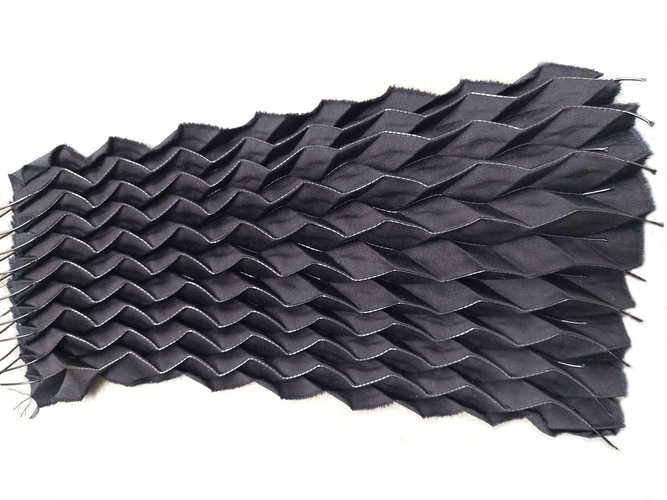Optical Fibre Sensing, 2022-23
The project consisted of developing a sensor that takes advantage of the inherent properties of a pleated fabric. By placing optical fibres in and on top of the folds of such a fabric, the amount of ambient light reaching those areas can be measured. This depends on how much the pleats are pulled apart or stretched and one can thus compare the light levels inside and outside of pleats with each other. A working prototype was realised and tested for its behaviour in different lighting conditions. It was found to behave differently in different lighting conditions but was able to differentiate between levels of stretch. The pleating pattern used is often referred to as „flat chevron“ and was chosen for its capability to lie flat and completely close the folds. The optical fibres used can collect and transmit side incident light. The light levels were measured with a photodiode for each fibre and read with an Arduino microcontroller. Further improvements can be made by optimising the sensor design and manufacturing for different applications. Whilst possible applications can vary greatly with fold pattern and choice of material, such applications can include soft robotics, textile wearables, costume design and stage performance.
Outputs:
Accepted Poster submission for E-Textiles Conference 2023
The project was developed by Zora Kutz, and was funded through the ECDF Wearable Computing research grant.

